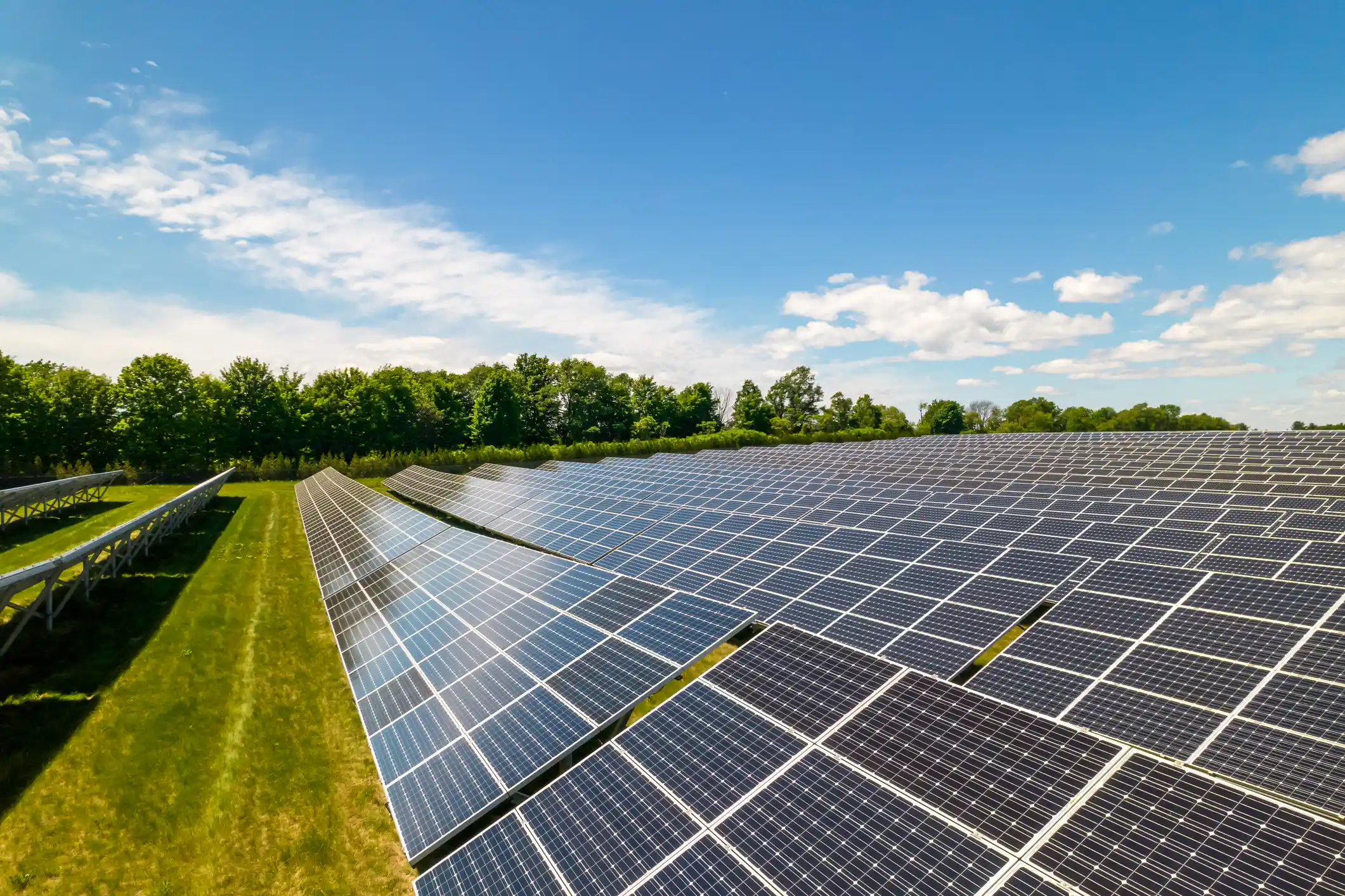POSTED
September 27, 2024
How to Invest in Solar Energy if You Are Not Rich
Utility-scale solar projects offer investors a unique opportunity that is potentially profitable and has a positive impact on the environment. Large-scale solar projects are also benefiting from global trends that can make them even more attractive to investors.

Over the last few years, demand for utility-scale solar has been increasing worldwide. In early 2024 alone, the U.S. added 11.8 gigawatts (GW) of utility-scale solar projects, which represented 75% of all new electricity-generating capacity on the grid. This highlights the increasing focus on solar energy investments. According to the U.S. Energy Information Administration (EIA), solar power is expected to be the main factor driving growth in the electric power sector, with its share of electricity generation rising from 4% in 2023 to 7% by 2025.
The cost of solar energy is also decreasing. This reduction in costs has helped improve the demand and attractiveness of solar farms for energy customers. While margins for solar are decreased by this price reduction, the increase in demand is a net positive for solar investments.
It’s an exciting time for solar energy projects, but it may seem like an investment that is out of reach. Most private investment opportunities are only accessible to accredited investors and the criteria for accredited investors typically require a high net worth or substantial income and for good reason. Private investments often involve complex financial instruments and strategies. They can also be illiquid and risky. Accredited investors are presumed to have the financial resilience to withstand significant losses without jeopardizing their overall financial stability.
Contrary to popular belief, however, private investment in utility-scale solar projects isn’t just for rich people. In this article, we’ll explore what utility-scale solar projects are, the potential financial benefits of investing in them, and how Shasta Power makes investing in solar projects accessible.
What Is a Utility-Scale Solar Farm?

Utility-scale solar projects, also known as solar power plants or solar farms, represent the largest scale of solar energy generation. These installations are significantly larger than residential or commercial solar setups. The capacity for a utility-scale solar farm typically ranges between 1 megawatt (MW) to several hundred megawatts. The electricity generated is usually fed into the grid and sold to electric utility companies through arrangements like Power Purchase Agreements (PPAs).
These projects also employ advanced technologies, including tracking systems that allow panels to move and maximize sun exposure throughout the day. Some utility-scale solar installations even integrate energy storage solutions. This allows them to store excess power during peak sunlight hours and distribute it during periods of low sunlight.
How Do Utility-Scale Solar Farms Generate Returns?

Solar farm investments generate returns for investors through various financial mechanisms and metrics that assess the viability and profitability of the project.
Metrics
Levelized cost of electricity (LCOE) is a critical metric that calculates the average cost per unit of electricity generated, factoring in the entire lifecycle costs of the project. This includes construction, operations, and maintenance. A lower LCOE indicates a more cost-effective project that could potentially offer better returns.
Net present value (NPV) is another important metric for solar projects. It assesses the profitability of a project by looking at the value over time in present-day terms. It takes into account inflation, risk, and the opportunity cost of investing in a particular project rather than an alternative asset. A positive NPV indicates the project is expected to generate a net profit over its lifetime.
Internal rate of return (IRR) also helps determine the profitability of a solar project. IRR is a percentage measure that indicates the annual return expected from an investment. The higher the IRR, the more attractive the investment.
Profit Mechanisms
Power purchase agreements (PPAs) help generate stable income for utility-scale solar farms. PPAs allow power producers to sell electricity at a predetermined price for a specified period of time, typically ranging from 10 to 25 years.
There are also several tax incentives and subsidies that help make solar farms even more profitable. The Inflation Reduction Act (IRA), for example, extends the Solar Investment Tax Credit at 30% for projects that start construction by the end of 2032.
The Production Tax Credit (PTC) also benefits solar farms by providing a base rate of $0.0275 per kilowatt hour (kWH) for electricity produced from qualified solar facilities. While these tax incentives and subsidies are not directly available to Shasta Power investors, they do lower the cost of utility-scale solar projects as a whole, helping to increase returns.
The Economic Accessibility of Solar Investments
The cost of utility-scale solar projects can range substantially. Smaller projects (around 1 MW) might require investments in the range of a few million dollars. Larger projects, especially those exceeding 50 MW, can need investments of well over $100 million.
Costs can also vary by location due to differences in land prices, labor costs, and the availability of solar resources. For example, areas with higher sunlight exposure can generate more electricity, potentially offering investors a better return.
At Shasta Power, we believe solar energy investments should be accessible to more than just accredited investors. Through innovative financial models, including more manageable investment tiers and participatory funding efforts, we make it possible for more people to contribute and benefit from solar energy projects. For instance, we are launching a new Regulation A+ fund, Shasta Power Fund II, that will give non-accredited investors an opportunity to invest in utility-scale solar projects.
Financial Benefits of Investing in Solar Energy
On average, the IRR on a utility-scale solar farm is 5-8% depending on the specific project and market conditions. This can equal 5 to 8 million dollars in revenue on a 100 million dollar project. Shasta’s Summit Power Fund typically targets an IRR greater than 20%. We also make it easy for you to invest. Simply create an account, verify your eligibility to invest, sign the subscription agreement, and then wire your investment.
It’s important to note that utility-scale solar funds are focused on specific renewable energy projects. This does create the potential for high returns, but also carries more risk and dependence on regulatory and market developments.
Investing in renewable energy is crucial for the long-term health of our planet. It is one of the most effective ways to reduce greenhouse gasses and combat the negative effects of climate change. With rising demand and decreased costs, solar energy is also a potentially profitable investment.
You shouldn’t have to be ultra-wealthy to invest in solar energy and help create a more sustainable future. At Shasta Power, we help make investing in utility-scale solar projects more accessible. Visit our investment information page to learn more about our solar projects and investment opportunities.





